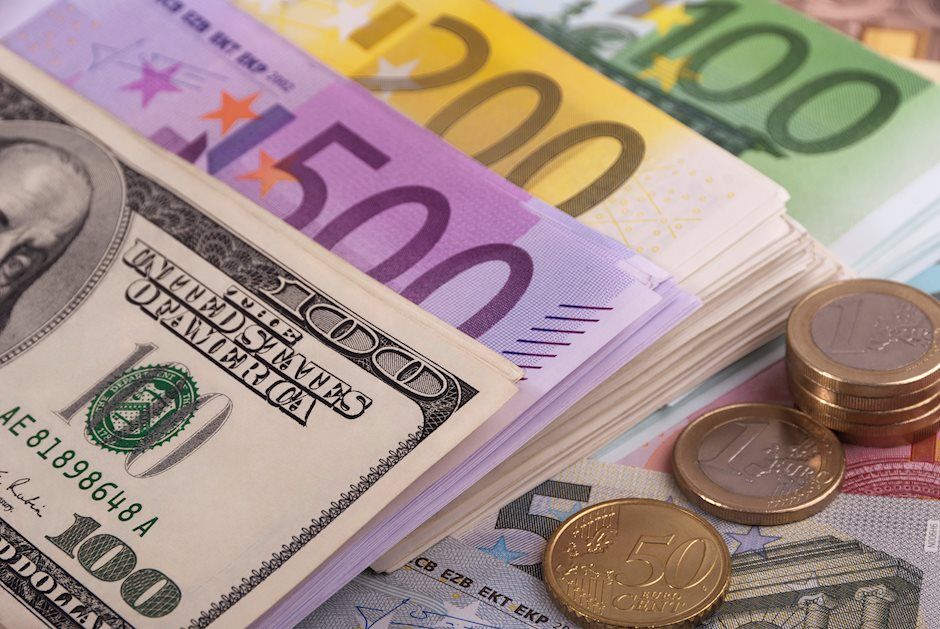Forex Today: No signs of life in markets as end of 2024 approaches

Here is what you need to know on Monday, December 30:
Major currency pairs remain stuck in tight ranges to begin the week as trading volumes remain thin heading into the end of 2024. Pending Home Sales for November and Chicago Purchasing Managers Index for December will be the only data featured in the US economic calendar on Monday.
The US Dollar (USD) Index ended the previous week marginally higher. To begin the new week, the USD Index holds steady at around 108.00. Meanwhile, US stock index futures trade in negative territory after Wall Street's main indexes posted large losses on Friday.
US Dollar PRICE Last 7 days
The table below shows the percentage change of US Dollar (USD) against listed major currencies last 7 days. US Dollar was the strongest against the Swiss Franc.
| USD | EUR | GBP | JPY | CAD | AUD | NZD | CHF | |
|---|---|---|---|---|---|---|---|---|
| USD | 0.05% | -0.11% | 0.95% | 0.19% | 0.19% | -0.03% | 1.05% | |
| EUR | -0.05% | -0.20% | 0.86% | 0.11% | 0.20% | -0.11% | 0.98% | |
| GBP | 0.11% | 0.20% | 0.99% | 0.31% | 0.39% | 0.09% | 1.18% | |
| JPY | -0.95% | -0.86% | -0.99% | -0.73% | -0.69% | -0.95% | 0.04% | |
| CAD | -0.19% | -0.11% | -0.31% | 0.73% | 0.05% | -0.22% | 0.86% | |
| AUD | -0.19% | -0.20% | -0.39% | 0.69% | -0.05% | -0.31% | 0.78% | |
| NZD | 0.03% | 0.11% | -0.09% | 0.95% | 0.22% | 0.31% | 1.05% | |
| CHF | -1.05% | -0.98% | -1.18% | -0.04% | -0.86% | -0.78% | -1.05% |
The heat map shows percentage changes of major currencies against each other. The base currency is picked from the left column, while the quote currency is picked from the top row. For example, if you pick the US Dollar from the left column and move along the horizontal line to the Japanese Yen, the percentage change displayed in the box will represent USD (base)/JPY (quote).
People's Bank of China (PBOC) Governor Pan Gongsheng said on Monday that the average deposit reserve ratio for Chinese banks is around 6.6% and added that, compared to central banks in other major economies, this level still leaves room for monetary policy adjustment. AUD/USD edges higher in the European morning on Monday and was last seen trading in positive territory slightly below 0.6250.
EUR/USD failed to make a decisive move in either direction in the previous week. The pair holds steady above 1.0400 in the early European session.
GBP/USD fluctuates in a narrow channel slightly below 1.2600 after posting modest gains on Friday.
Gold ended the previous week virtually unchanged despite rising more than 0.5% on Thursday. XAU/USD struggles to gain traction early Monday but hold comfortably above $2,600.
USD/JPY preserved its bullish momentum and registered weekly gains for the fourth consecutive time. The pair stays relatively quiet at around 158.00 in the European morning on Monday.
Risk sentiment FAQs
In the world of financial jargon the two widely used terms “risk-on” and “risk off'' refer to the level of risk that investors are willing to stomach during the period referenced. In a “risk-on” market, investors are optimistic about the future and more willing to buy risky assets. In a “risk-off” market investors start to ‘play it safe’ because they are worried about the future, and therefore buy less risky assets that are more certain of bringing a return, even if it is relatively modest.
Typically, during periods of “risk-on”, stock markets will rise, most commodities – except Gold – will also gain in value, since they benefit from a positive growth outlook. The currencies of nations that are heavy commodity exporters strengthen because of increased demand, and Cryptocurrencies rise. In a “risk-off” market, Bonds go up – especially major government Bonds – Gold shines, and safe-haven currencies such as the Japanese Yen, Swiss Franc and US Dollar all benefit.
The Australian Dollar (AUD), the Canadian Dollar (CAD), the New Zealand Dollar (NZD) and minor FX like the Ruble (RUB) and the South African Rand (ZAR), all tend to rise in markets that are “risk-on”. This is because the economies of these currencies are heavily reliant on commodity exports for growth, and commodities tend to rise in price during risk-on periods. This is because investors foresee greater demand for raw materials in the future due to heightened economic activity.
The major currencies that tend to rise during periods of “risk-off” are the US Dollar (USD), the Japanese Yen (JPY) and the Swiss Franc (CHF). The US Dollar, because it is the world’s reserve currency, and because in times of crisis investors buy US government debt, which is seen as safe because the largest economy in the world is unlikely to default. The Yen, from increased demand for Japanese government bonds, because a high proportion are held by domestic investors who are unlikely to dump them – even in a crisis. The Swiss Franc, because strict Swiss banking laws offer investors enhanced capital protection.
Author

Eren Sengezer
FXStreet
As an economist at heart, Eren Sengezer specializes in the assessment of the short-term and long-term impacts of macroeconomic data, central bank policies and political developments on financial assets.

















